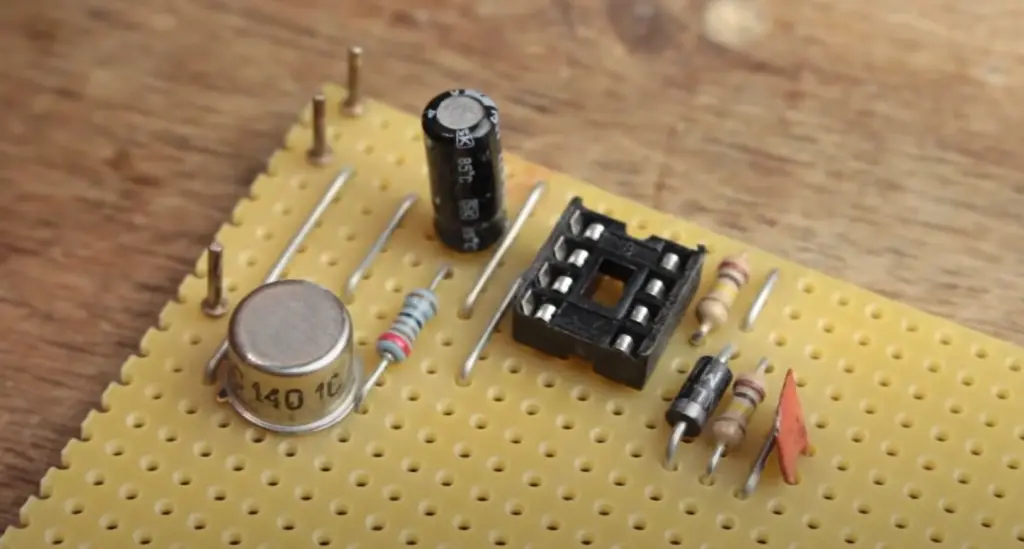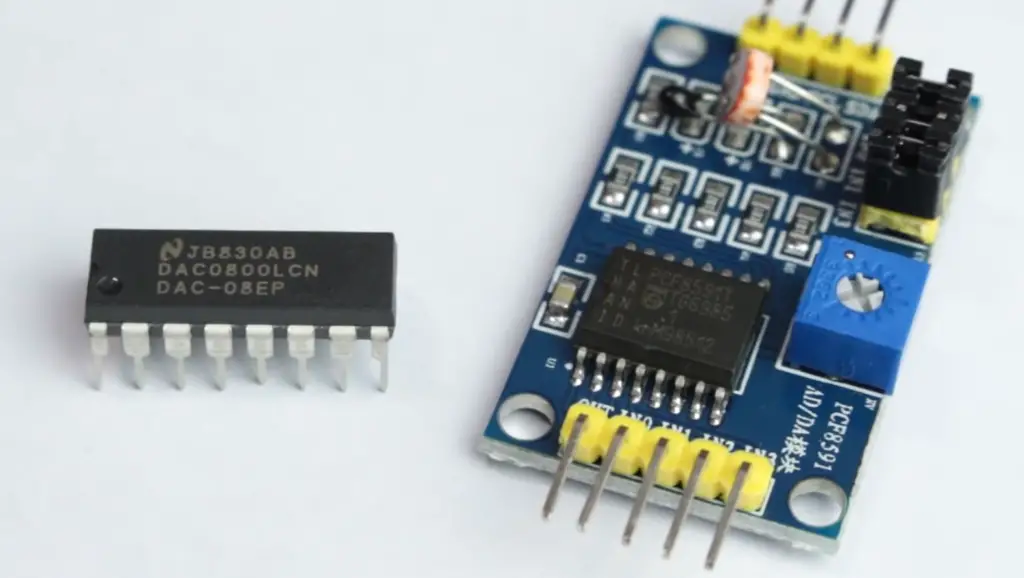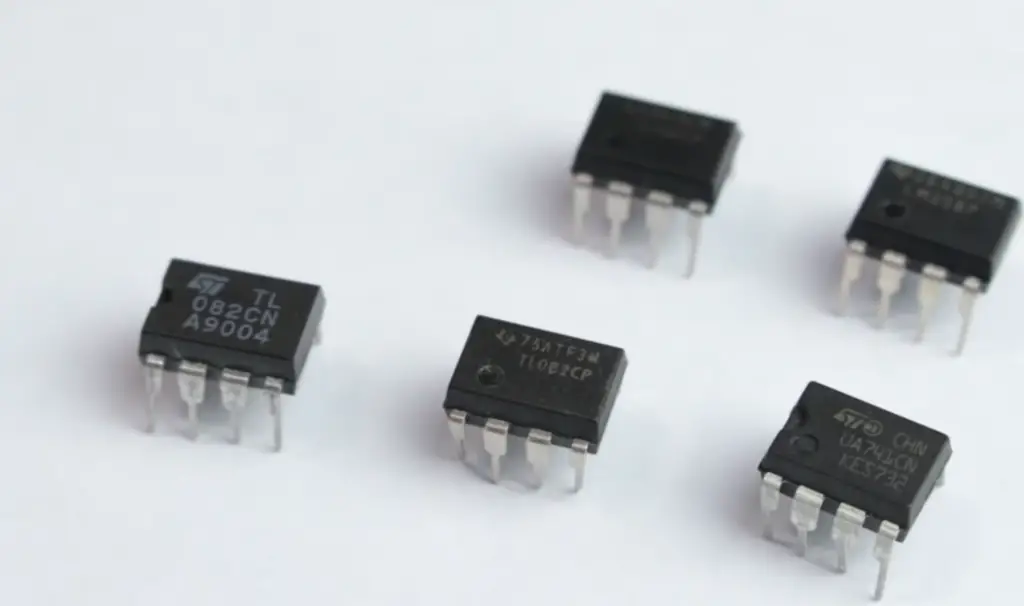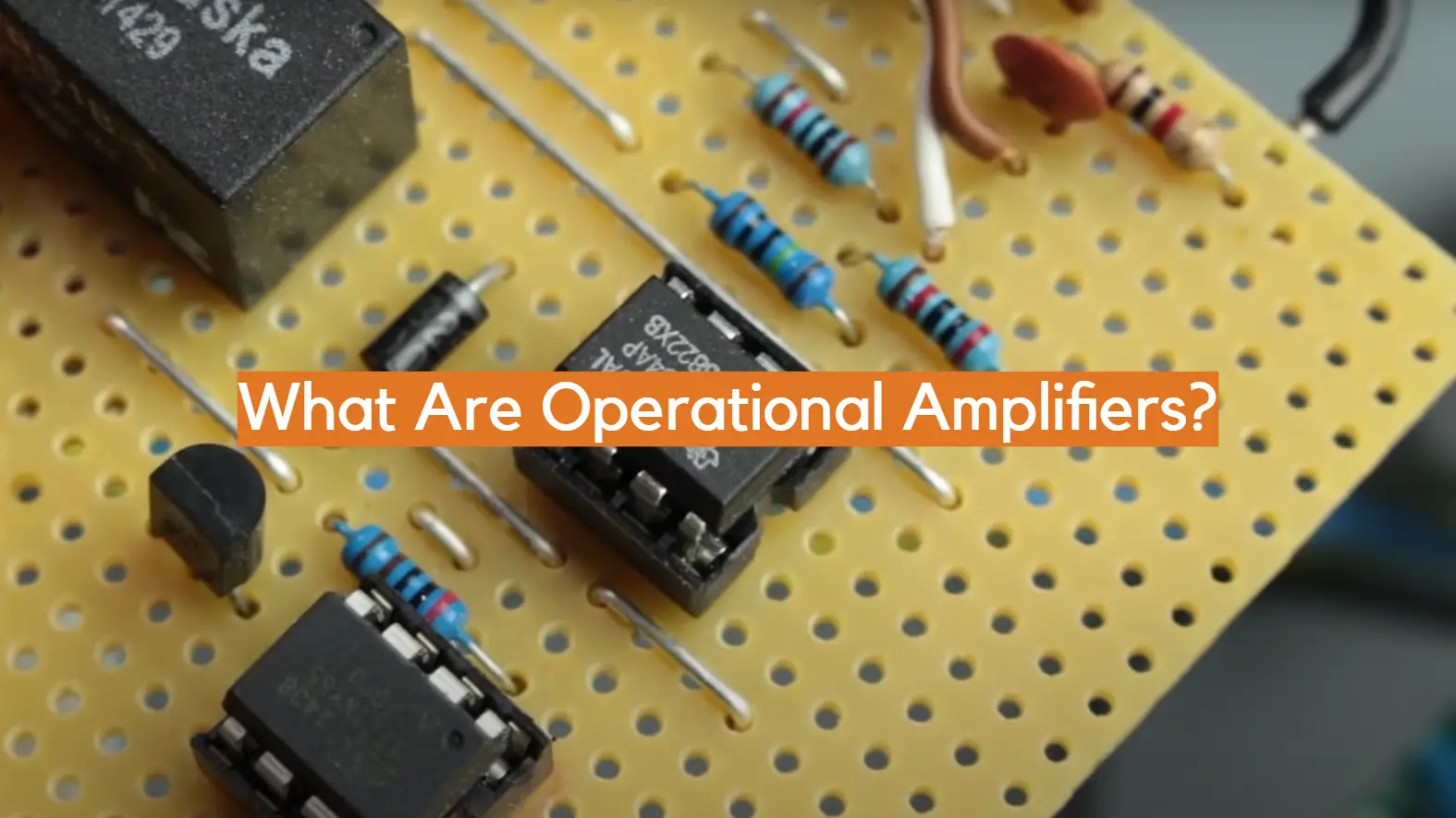Operational amplifiers are a staple in electronics, and with good reason. They can be used to solve a wide variety of problems. In this guide, we will answer some of the most common questions about operational amplifiers. We will start with a brief introduction to what they are and how they work, then move on to more specific topics like voltage gain, feedback, and noise. By the end of this guide, you should have a good understanding of what operational amplifiers are and how to use them effectively in your own projects!
What are Operational Amplifiers
An op-amp is usually used in applications such as amplification, filtering, comparison and conversion of signals.

An operational amplifier works by taking two distinct inputs – the inverting input and the non-inverting input. The output voltage which is produced will depend on the difference between these inputs. This makes op amps useful for measuring small changes in voltage levels, as well as amplifying a wide range of frequencies across various systems.
Op-amps come with a range of characteristics including high gain bandwidth product, low noise figure, low power consumption and high speed operation. These components also have a range of output options, and can be used to achieve different levels of accuracy within a system. We will dive deeper into those later.
The most common type of op-amp is the differential amplifier – this is used to amplify the difference between two input signals. This allows for a variety of applications such as amplification, filtering and comparison. Differential amplifiers can also be used in audio applications where they offer low distortion and high signal-to-noise ratio.
Op-amps are essential components in modern electronic systems, with their versatility making them an indispensable tool in any design engineer’s arsenal. Their simple yet effective design allows these components to perform a wide range of tasks – from basic voltage level measurement, up to complex control systems. [1], [2], [3], [4]
Key Characteristics and Parameters of Operational Amplifiers
Much like any other amplifier, operational amplifiers offer gain, bandwidth, and noise characteristics to allow them to be used in a variety of applications. However, their unique qualities come from the wide range of parameters available to customize their performance. In this section we will discuss the main characteristics and parameters of operational amplifiers.
Open-loop gain
Open-loop gain is an important measurement in operational amplifiers that helps indicate how much amplification a circuit can achieve. The open-loop gain of an electronic amplifier is the gain obtained when no overall feedback is used in the circuit.
The open-loop gain of an op amp is essentially infinite, meaning that any weak input signal will be greatly amplified by the circuit. This makes op amps popular for amplifying weak signals for applications such as signal processing and control systems.
The gain of an amplifier is determined by its internal circuitry, but even more importantly, it’s affected by external components connected to it. These external components are known as feedback elements and they affect how much gain the amplifier has at any given moment. A feedback element can be used to reduce the gain of an amplifier, making it easier to control and use in more complex circuits.
In order to better understand open-loop gain and its implications on operational amplifiers, it’s important to remember that there is a difference between closed-loop gain and open-loop gain. Closed-loop gain is the amount of amplification achieved when a feedback element is connected to the amplifier circuit. In contrast, open-loop gain is the amplification level before any feedback elements are connected. It’s important for engineers to consider both these factors when designing circuits with operational amplifiers.

Input Impedance
It is usually measured in units of ohms or kiloohms (KΩ). Generally, higher input impedance values are desirable since this reduces the amount of power required to drive the inputs, resulting in improved performance and less chance of distortion. The exact value depends on the type of Op Amp being used, but for most general-purpose models it should typically be between 10 KΩ and 1 MΩ.
Output Impedance
Output impedance is an important consideration when using operational amplifiers, as a large output impedance can reduce the accuracy of the amplifier’s performance. In general, a low output impedance provides better performance, but at a cost of increased power consumption or higher component count. Output impedance for most op-amps is very low and does not require special attention. There are two main characteristics that determine output impedance: open loop gain and feedback network components.
Frequency response and bandwidth
The frequency response of an op amp is the range of frequencies it can amplify without distorting the signal, and is usually expressed as a graph that shows how much gain the op amp has at different frequencies. The bandwidth of an op amp describes how wide a range of frequencies it can amplify with acceptable distortion levels. Operational amplifiers generally have high gains at low frequencies (i.e., the DC level) and decrease in gain as frequency increases. This is due to their input capacitance, which acts like a filter on signals entering the amplifier.
Gain bandwidth product
Gain bandwidth product, also known as GBW, is an important electrical parameter of operational amplifiers (OP-AMPs) and describes how the gain of a device varies with frequency. It defines the highest frequency at which an OP-AMP can amplify signals while still providing a given amount of gain. Essentially, it reflects the relationship between gain and bandwidth in OP-AMPs and indicates how well they can amplify high frequencies before the amplifier’s response begins to roll off.
The value for Gain Bandwidth Product is determined by multiplying a given op-amp’s open loop voltage gain with its unity gain bandwidth frequency. This number is typically listed on an op-amp’s datasheet along with other electrical parameters such as supply voltage, polarity and slew rate. [1], [2], [3]

Advantages of Operational Amplifiers
Now that you have an idea of what operational amplifiers are and how they work, let’s discuss some of the advantages they offer.
High input impedance
One of the biggest advantages of operational amplifiers is their very high input impedance. This means that almost no current flows through the input terminals when AC signals are applied, allowing them to faithfully reproduce signals without losing any power or voltage. Furthermore, because only small amounts of current flow through the input terminals, they can be used in systems with sensitive components or other applications where low levels of current draw are important.
High gain
Operational amplifiers offer very high gains when compared to other types of circuits. Depending on the design, an op amp can provide gains upwards of tens or even hundreds of thousands. This makes them ideal for applications where a large amount of amplification is required such as in audio systems and signal processing circuits.
High slew rate
High slew rates allow operational amplifiers to accurately track rapidly changing input signals, making them ideal for applications such as audio processing, video production and instrumentation.
Low output impedance
Another great advantage of op-amps is that they have very low output impedance. This means that the amplifier will be able to transfer a larger amount of power from its output to an external load, resulting in improved performance and less chance of distortion. The exact value depends on the type of op amp being used, but for most general-purpose models it should typically be between 0.01 and 100 ohms.
Low cost
Last of the primary advantages of using operational amplifiers is their relatively low cost. This makes them accessible to almost any user, from hobbyists to professionals. Furthermore, the components used to create a single operational amplifier are even cheaper than those used in more complex circuits and systems, making them attractive for both mass-production and prototyping purposes. [4]

Disadvantages of Operational Amplifiers
As good and versatile as they are, there are a few drawbacks to using operational amplifiers. It’s vital to understand these drawbacks before incorporating them into a design in order to ensure that their application is the most suitable for the given task.
High off-set voltage
One of the biggest issues with operational amplifiers is their potential for high offset voltages. This is a voltage difference between the inputs that causes an undesired DC output, even when there is no AC signal present. Offset voltages can be caused by manufacturing defects and also due to thermal drift in extreme temperatures, making them difficult to completely eliminate.
The higher this voltage, the more difficult it becomes for a system designer to accurately control the amplifier’s output. Not only that, but this can also lead to errors in the output signal, which can be detrimental to applications such as instrumentation or audio production.
Limited bandwidth
Another limitation of operational amplifiers is their limited bandwidth. This is the range of frequencies that they can accurately reproduce without introducing distortion or other errors. Most op amps are designed with a maximum frequency range of no more than a few hundred megahertz, making them unsuitable for applications requiring very high frequency signals. While this may be sufficient for general applications such as audio or video processing, some specialized systems may require higher bandwidths which would require more complex circuits.
Furthermore, even when within their specified frequency range, they may not be able to accurately reproduce certain types of waveforms due to their limited slew rate and high output impedance. This makes them unsuitable for applications such as wireless communication where signal fidelity is critical.

High input bias current
Another of the main disadvantages of op-amps is their relatively high input bias current, which is the current that must be supplied to the non-inverting and inverting inputs in order for them to function correctly. Depending on the design and type of operational amplifier being used, this can vary from a few kilometers (pA) up to hundreds or even thousands of nanoamperes (nA). This can cause problems if both inputs are connected directly to ground as it can lead to excessive heating of the circuit.
Limited Common Mode Rejection Ratio
This value determines how much interference or noise will be present in the output signal due to these unwanted signals.
For most general-purpose op amps, this value tends to be relatively low and thus they are not suitable for high-precision applications where a high CMRR is required.
While it is possible to use some specialized op amps that feature a higher CMRR, they are typically more expensive and may not be suitable for certain applications. Therefore, when designing systems that require a high degree of accuracy and precision, it is important to ensure that the chosen operational amplifier features an adequate CMRR.
High off-set current
Last major disadvantage of operational amplifiers is their tendency to generate offset currents. This occurs when the amplifier generates an output current that does not match the input signal, resulting in a voltage drop across the load which can lead to incorrect readings or other undesired effects. The magnitude of this current depends on the type and design of the op-amp being used, but it should typically be kept as small as possible to ensure reliable operation. [4]

FAQ
Do op-amps only work with AC?
Yes, operational amplifiers (op-amps) can be used with both AC and DC signals. However, they are traditionally more commonly used with AC signals because of their ability to amplify both the positive and negative parts of a signal equally. When using op-amps with DC signals, two separate amplifiers may need to be employed in order to properly amplify both the positive and negative portions of the signal. Additionally, when using op-amps for low frequency applications such as audio or radio frequencies, special care needs to be taken in selecting an op-amp that’s suitable for those frequencies.
Is operational amplifier AC or DC?
AC signals, or signals with an alternating current, cannot be processed by operational amplifiers directly. However, the output of an op-amp can still be used to create an AC signal through external components like capacitors or inductors. In these cases, the op-amp is used to create a DC signal that can be converted into an AC signal by external components. By changing the frequency of the AC signal and adjusting the gain, different types of waveforms can be generated.
For example, an operational amplifier with negative feedback can be used as a sinusoidal oscillator in order to generate sine waves or square waves. Additionally, operational amplifiers are also often used for power conversion applications such as inverters and DC-DC converters.
Overall, while operational amplifiers are not designed to directly process AC signals, they have many uses when it comes to generating various types of AC signals through other components connected to their output terminals.
What is the operational amplifier and its types?
An operational amplifier (op amp) is an integrated circuit that amplifies electrical signals. It is an essential building block for a variety of electronic circuits, from simple audio amplifiers to sophisticated digital-to-analog converters.
Op amps are available in a variety of configurations, depending on the application. Common types include single supply op amps, dual supply op amps, and rail-to-rail input/output (RRIO) op amps. Single supply op amps can operate with one power source and two ground references. This type of op amp can be used in applications such as active filters or signal buffers. Dual supply op amps require separate power sources for the positive and negative nodes, enabling them to produce higher gains than single supply op amps. They are most commonly used in audio amplifiers and voltage followers.
Finally, RRIO op amps offer the highest level of performance among the three types. These op amps have inputs and outputs that can range from full negative to full positive voltage, allowing them to be used in a range of applications including power management, instrumentation, and robotics.
What are the 3 main characteristics of operational amplifiers?
Operational amplifiers typically have three main characteristics: they are highly linear, they have a high gain bandwidth product, and they have a low input offset voltage.
High linearity is important when using an Op Amp as it means that the output signal accurately follows the input signal without distortion. The gain bandwidth product defines how much of an increase in frequency response can be achieved by increasing the gain and is generally expressed in MHz/V. The input offset voltage occurs when both inputs of an Op Amp are at identical voltages but there is still a difference between their outputs due to internal imperfections. This is important because it affects the accuracy of the amplifier’s overall performance.
In order to improve these three characteristics, designers will often use feedback to control the gain, bandwidth and offset voltage. This is done by connecting the output of an Op Amp to one of its inputs in order to create a loop that reduces any errors caused by imperfections in the amplifier itself.
What are the common operational amplifiers?
They are used in a variety of applications, from audio amplification to signal conditioning.
The most common types of Op-amps typically contain multiple transistors, resistors, and capacitors all combined into one package. These components work together to give the amplifier a range of features such as gain control, frequency response, noise rejection, and power supply regulation.
For example, a voltage feedback op-amp will have an input stage consisting of transistors for amplifying the input signal; resistors for setting gain levels; capacitors for filtering out high frequencies; and diodes or other components for controlling the power supply.
Op-amps can be categorized by their output type, such as voltage follower, current source, or differential amplifier. Each has its own set of advantages and disadvantages in regards to performance, power consumption, cost, size, and other factors.
For more advanced applications, op-amps may also contain special features such as error correction circuits or integrated filters for better noise rejection or data signal processing.
Useful Video: Introduction to Operational Amplifier: Characteristics of Ideal Op-Amp
Conclusion
Op-amps are a versatile and powerful tool used in many applications. From audio circuits to robotics, they can be used as amplifiers, comparators, filters, and so much more. Op-amps have been around for decades now but are still being developed and improved upon to provide us with ever more efficient and accurate designs.
Although the basics of how an Op-amp works is relatively simple, there is still a lot of complexity involved when designing a circuit or system that uses one. We have only scratched the surface in this introductory guide; further experimentation and research will help you to become more familiar with the components involved and their operation.
In this article, we have answered some of the most commonly asked questions about what operational amplifiers are and how they work. We have also provided a few useful tips to keep in mind when designing with them. By understanding the basics of what an op-amp is and its uses, you can move on to more advanced topics such as selecting the right components for your application or circuit design, troubleshooting any problems that arise, and so much more. With further exploration and study, you can become an expert in this field!
We hope you enjoyed our introduction to operational amplifiers. Please refer back to this article if you ever need a refresher! Thanks for reading.
References
- https://www.monolithicpower.com/en/operational-amplifiers
- https://www.ablic.com/en/semicon/products/analog/opamp/intro/
- https://www.monolithicpower.com/en/operational-amplifiers
- https://yourengineer.in/knowledge-hub/what-is-op-amp-definitions-advantages-disadvantages/














Leave a Reply